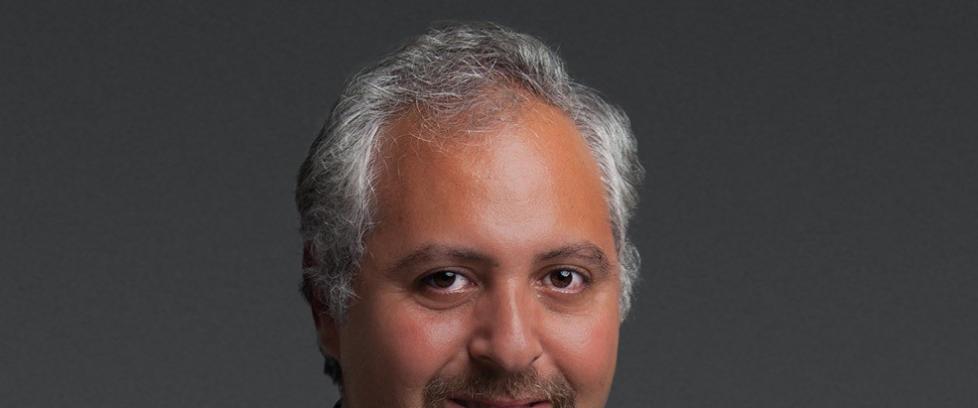
For most people, the term “unicorn” is not something you’d want to put on your résumé.
But when it comes to résumés, Ryan Permeh is not most people.
The Rochester area native and 1995 Kasson-Mantorville High grad is the founder and chief scientist of the artificial intelligence and cybersecurity company Cylance, which recently sold to BlackBerry for $1.4 billion.
Yes, that BlackBerry. Yes, billion.
The figure cements Cylance within the realm of startup “unicorns”—privately held companies valued at more than $1 billion.
“One thing that’s helped me as an entrepreneur is not theorizing all the time, but actually doing,” Permeh says. “That practicality definitely comes from growing up in the Upper Midwest. There are exceptionally talented people that come out of there.”
That “actually doing” started back as a kid, when he and his friends—including Nick Dibble, the manager of CyberSecurity Engineering at Mayo Clinic—were obsessed with tech. They read computer manuals. Got their first version of Linux when they were young teens.
“Rochester has always been a technology-forward area,” says Permeh. “I grew up in an IBM family, with my mom working there about 35 years before she retired. Many of the families in Kasson were IBM or Mayo Clinic families, and both made for easier access to technology in schools and home than a lot of other areas of our size at the time.”
Founding Cylance, fighting cyberthreats
Permeh left the Midwest in 2000 with sights on the digital promised land, Southern California, and a career working with information security startups. After a few stops, he landed at McAfee, where he rose to be its chief scientist.
“My business partner [CEO and Cylance co-founder Stephen McClure] was global CTO of McAfee at the time the company was acquired by Intel for more than $8 billion,” says Permeh.
They spent a couple years at Intel focused on bringing cybersecurity to the chip level, but Permeh grew concerned that they weren’t moving fast enough to combat looming cyberthreats.
“These larger companies can tend to be slow-moving, so McClure and I left to start Cylance.”
Permeh says this freed him up to reimagine the best ways to design cybersecurity with the newest technologies available. Some of those ideas—like focusing on preventing and predicting hacks, as opposed to simply trying to detect them after the fact—weren’t popular at the time Cylance was founded in 2012. And their method—described as applying “artificial intelligence, algorithms, and machine learning to cybersecurity”—was considered cutting-edge. They were applying AI to teach computers to detect hacks.
Investors bought into the idea. Cylance raised a reported $15 million in start-up fees in 2013.
In 2014, Cylance was the first to reveal that Iranian hackers were tapping into airport networks and accessing information to print out security badges.
In 2015, hackers had been running a months-long attack on the United States Office of Personnel Management. They had stolen the personal info of more than 21 million federal employees. Then the U.S. Government—facing the worst data break in its history—called in Cylance.
That was April 16. On April 17, Cylance software discovered—and disabled—the hack.
“The significance of the cutting-edge preventative technology offered by Cylance in responding to the data breach cannot be understated,” read the report from the House Committee on Oversight and Government Reform. “[Cylance] immediately found malware and set about cleaning OPM’s enterprise.”
By 2016, with the word out on their innovative approaches, Cylance was a contender for Inc. Magazine’s coveted Company of the Year (though they lost out to Riot Games, the video game developer behind titles like “League of Legends”).
By the end of 2016, Cylance was protecting more than three million computer networks. Dell had announced that Cylance software would be installed on all computers sold to corporate customers.
By 2018, Cylance could list one hundred Fortune 500 companies as clients. Their revenue—which had been growing at 90 percent year over year—was a reported $130 million.
In February of this year, BlackBerry finalized that $1.4 billion deal.
And Permeh’s tone when discussing this decision was that of a man with 1.4 billion reasons to be confident in his approach.
“Cloud computing, which is now very prevalent, was not at all prevalent back then,” he says. “But we had no technical debt. As a startup, you can tackle more moonshot-type issues—things that you can fundamentally believe will change the game.” [Editor’s note: Technical debt is defined as ‘the trade-off between the short-term benefit of rapid delivery and long-term value,’ meaning companies without technical debt can focus on more long-term projects.]
Permeh also alludes to the risks and challenges startups have versus those large corporate entities that do have technical debt. Startups, he says, often attempt to innovate by reconceptualizing existing technologies with no clear path to revenue.
“Some only innovate through acquisition,” he says. “Contrary to the risks, we live in a world where funding for startups is at all-time highs.”
During Cylance’s six-year run, it raised roughly $250 million. The company quickly grew to more than 900 employees. Throughout its run, Permeh and his growing team continued to add cutting-edge technology to its cybersecurity approach, replacing concepts such as automation with artificial intelligence.
He describes cybersecurity threats as a continuously rising tide of viruses and bad data files that attackers send out. The larger security companies like McAfee began having trouble keeping up, because they were using a network of employees actively working on defending against attacks. Permeh says a great deal of threats were unable to be addressed simply by volume alone.
“The attackers understood they could overwhelm defenders simply by being faster,” he says.
Cylance spent a lot of time on data collection and building a pipeline to understand how to approach the issues. Implementing AI and machine learning allowed Cylance’s technology to figure out for itself whether a file was good or bad, meaning there was no need for any employee to be responsible for detecting problems anymore. And Cylance’s products can be used in various computers or devices, new or old.
“You can buy the cheapest laptop out there and use our tech, and it won’t affect its performance,” Permeh says.
Another factor is the attackers themselves, and their approach to infiltrating a system.
“The major threats we’ve seen in the last five to seven years, we’ve been able to predict well in advance because they are previously used tactics,” he says. “The bad guys change frequently, but they don’t change their approach frequently.”
BlackBerry and the Internet of Things
The sale of Cylance technically removes the company from that vaunted unicorn list, but its impact will only grow by working with BlackBerry, which Permeh says has done a great job of innovating itself. After Cylance’s acquisition, in fact, Permeh accepted a role at BlackBerry to stay on as its chief security architect.
BlackBerry has transitioned almost entirely from its era of selling mobile phones into the Internet of Things, the universe of connected devices around the world that research firm Gartner has projected could rise to more than 20 billion devices by 2020.
“For every personal computer you see out there, there are 40 to 50 non-PC connected devices nearby. In modern cars, there are dozens of computer-type devices running inside them. This is the Internet of Things,” Permeh says.
And it all needs a strong network of cybersecurity.
“These days, technology is alight with machine learning and AI,” says Permeh. “In 2012, that wasn’t true. People are less skeptical now than they were. Many applications incorporate machine learning, everything from Netflix showing you what you want to watch to Google Maps and its dynamic routing.”
He says BlackBerry’s embedded software is now its biggest revenue stream. Its software can be found in all types of industries that now utilize connected devices to conduct business. The software can be found in more than 120 million cars on the road right now.
What keeps Permeh engaged in the industry, even after reaching the end of that startup rainbow?
“I’m staying with BlackBerry because the Internet of Things needs security. It’s always been my personal mission to ensure the security and privacy of real people, and that’s BlackBerry’s mission as well. So we align.”
Today, Permeh lives in Laguna Hills, Calif.—about halfway between L.A. and San Diego—with his wife Holly, daughter Sophia (9), and son Adam (8).
And does he miss the Midwest, versus the sunny Southern California life?
“I do miss it. It holds a special place in my heart. My family moved to Sioux Falls, so I go there more than Rochester these days,” he says. “The winters, I don’t miss so much.”
